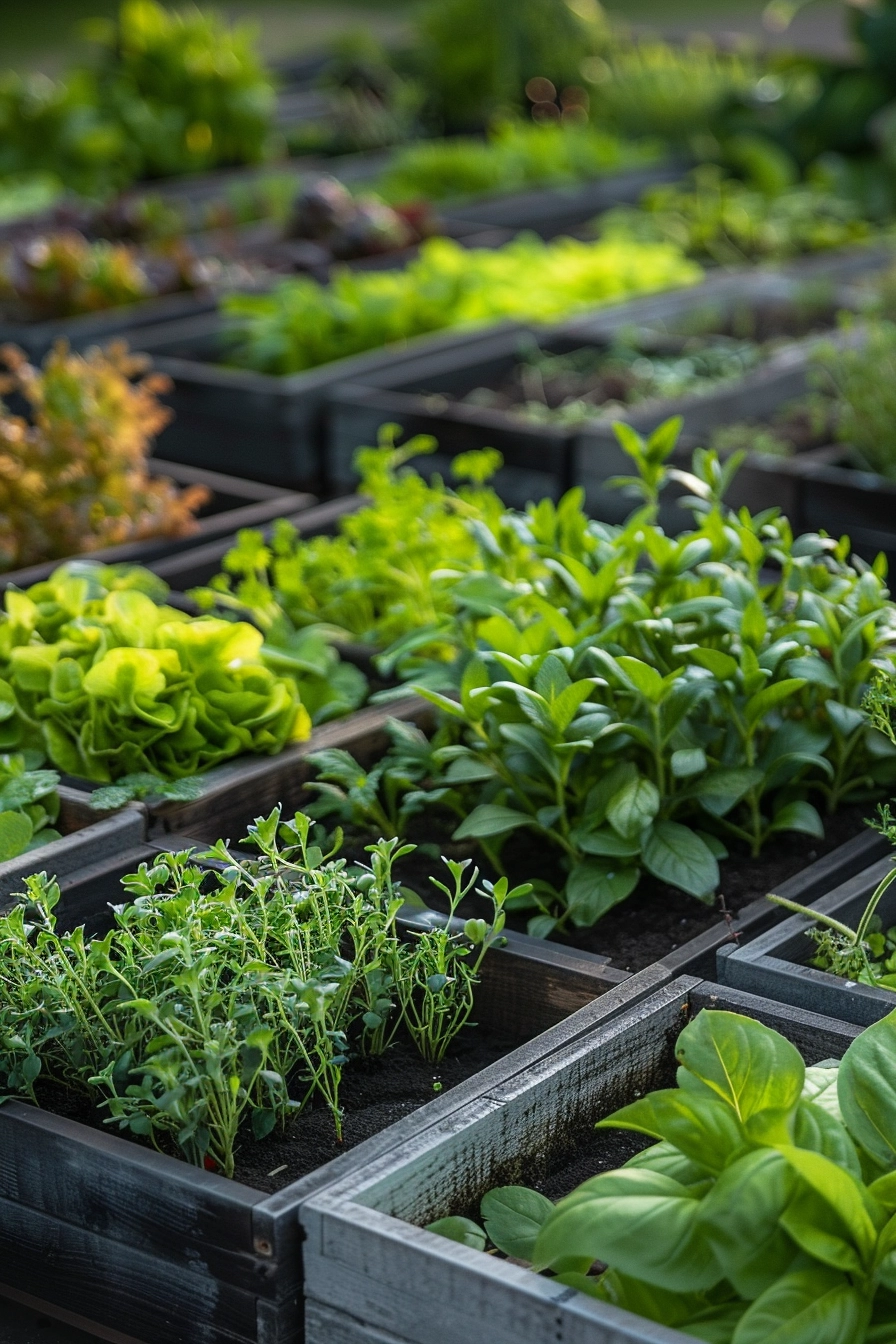Are you looking to add fresh flavors to your cooking while enjoying the satisfaction of growing your own herbs? Look no further than your backyard! With a few simple tips and tricks, you can create a thriving herb garden right at home.
When it comes to growing herbs in your backyard, getting the soil mix right is key. A blend of topsoil, compost, and coarse sand provides the ideal environment for your herbs to thrive. Consider adding a bit of earthworm castings for an extra nutrient boost. Remember, most herbs prefer sandy soil similar to their Mediterranean origins.
Key Takeaways:
- Choose a sunny spot in your backyard for your herb garden, as most herbs require plenty of sunlight.
- Water your herbs regularly, especially during dry spells, to keep the soil consistently moist.
- Select herbs that you frequently use in your cooking for a practical and flavorful herb garden.
- Consider starting your herb garden from seeds to have a wider variety of herbs to choose from.
- Preserve your herbs by drying, freezing, or turning them into sauces and pesto.
Tips for Successful Backyard Herb Gardening
Backyard herb gardening is a fulfilling and enjoyable activity that allows you to have fresh herbs right at your fingertips. Whether you’re a culinary enthusiast or just love the idea of cultivating your own edible garden, growing herbs in your backyard is a fantastic way to add flavor and freshness to your dishes. Here are some essential tips for successful backyard herb gardening:

Choose the Best Herbs for Your Backyard
When it comes to selecting herbs for your backyard garden, it’s best to choose varieties that you frequently use in your cooking. Some popular options include rosemary, oregano, basil, and thyme. These herbs are not only versatile but also relatively easy to grow and care for. Their fresh aroma and vibrant flavors can enhance a wide range of culinary creations.
Provide Optimal Growing Conditions
Outdoor herb gardening requires proper sunlight and water for optimal growth. Most herbs thrive in full sun, so make sure to plant them in an area where they can receive at least 6-8 hours of direct sunlight each day. Additionally, herbs have different watering needs, but generally, they prefer well-drained soil and regular watering. Be cautious of drought conditions and water your herbs more frequently during dry spells.
Practice Backyard Herb Plant Care
Backyard herb plants require minimal care when compared to other garden crops. Most herbs only need fertilization if they are annuals or if you frequently harvest their leaves. A slow-release organic fertilizer or compost applied during the growing season can provide the necessary nutrients. Additionally, regular pruning and harvesting help promote bushier growth and prevent herbs from becoming leggy or woody.
Consider Starting from Seeds
If you’re looking to expand your herb garden and have a wider variety of herbs to choose from, consider starting your plants from seeds. While it requires some patience and care, starting herbs from seeds can be a cost-effective and rewarding way to experiment with different flavors and aromas. Simply follow the seed packet instructions for sowing depth, spacing, and germination time.
Preserve Your Harvest
One of the joys of backyard herb gardening is being able to enjoy your harvest throughout the year. There are various methods to preserve herbs for future use. You can freeze them in ice cube trays with olive oil or water, dry them by hanging them upside down in a cool, well-ventilated area, or turn them into flavorful sauces or pesto. Preserving your herbs allows you to add that fresh taste to your meals even during the winter months.
Backyard herb gardening is a wonderful way to connect with nature, enhance your culinary creations, and add a touch of freshness to your everyday life. By following these tips, you can create a thriving herb garden right in your own backyard. So, get your hands dirty, embrace the joy of gardening, and start growing your favorite herbs today!

Growing Herbs in Containers and Pots
If you have limited space or prefer the versatility of containers, growing herbs in pots and containers is a great option. Not only does it save space, but it also allows you to have fresh herbs right at your fingertips. To get started, choose a premium potting mix specifically designed for vegetables and herbs. This ensures your herbs receive the nutrients they need to thrive.
When selecting a container, make sure it has proper drainage to prevent waterlogging. Excess moisture can lead to root rot and other plant health issues. Plant your herbs in the pots at the same depth as they were in their original containers. This helps establish a strong root system and promotes healthy growth.
Water your potted herbs regularly, but be cautious not to wet the foliage excessively. This can lead to fungal diseases. To keep your herbs bushy and encourage growth, harvest them frequently. Pinching out the growing tips not only promotes new growth but also helps maintain a compact and attractive plant.
Preserving your herbs allows you to enjoy their flavors even when they are out of season. There are several methods you can use, such as drying, freezing, or turning them into sauces or pesto. Drying herbs, either by hanging them or using a dehydrator, is a popular method that retains their flavors. Freezing herbs in ice cube trays with some water or oil is another convenient way to preserve them.


